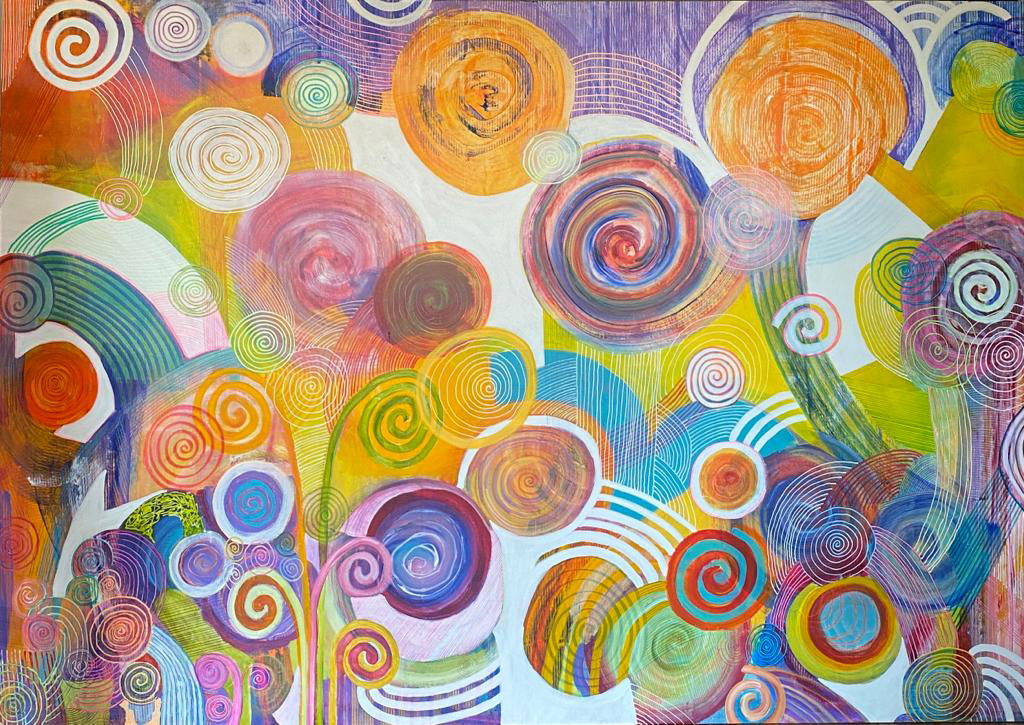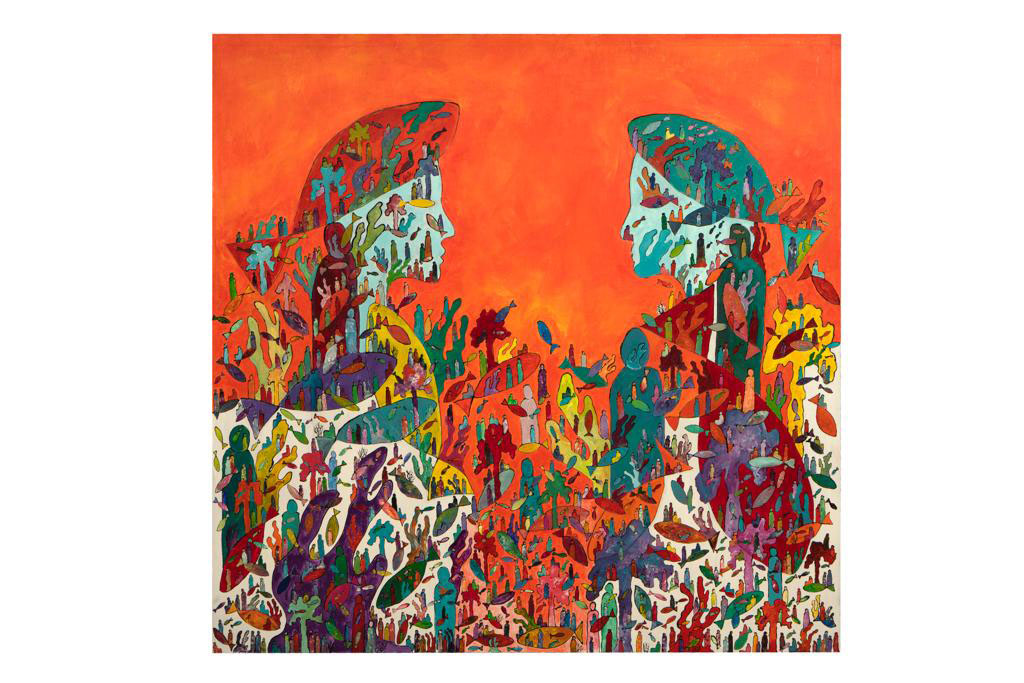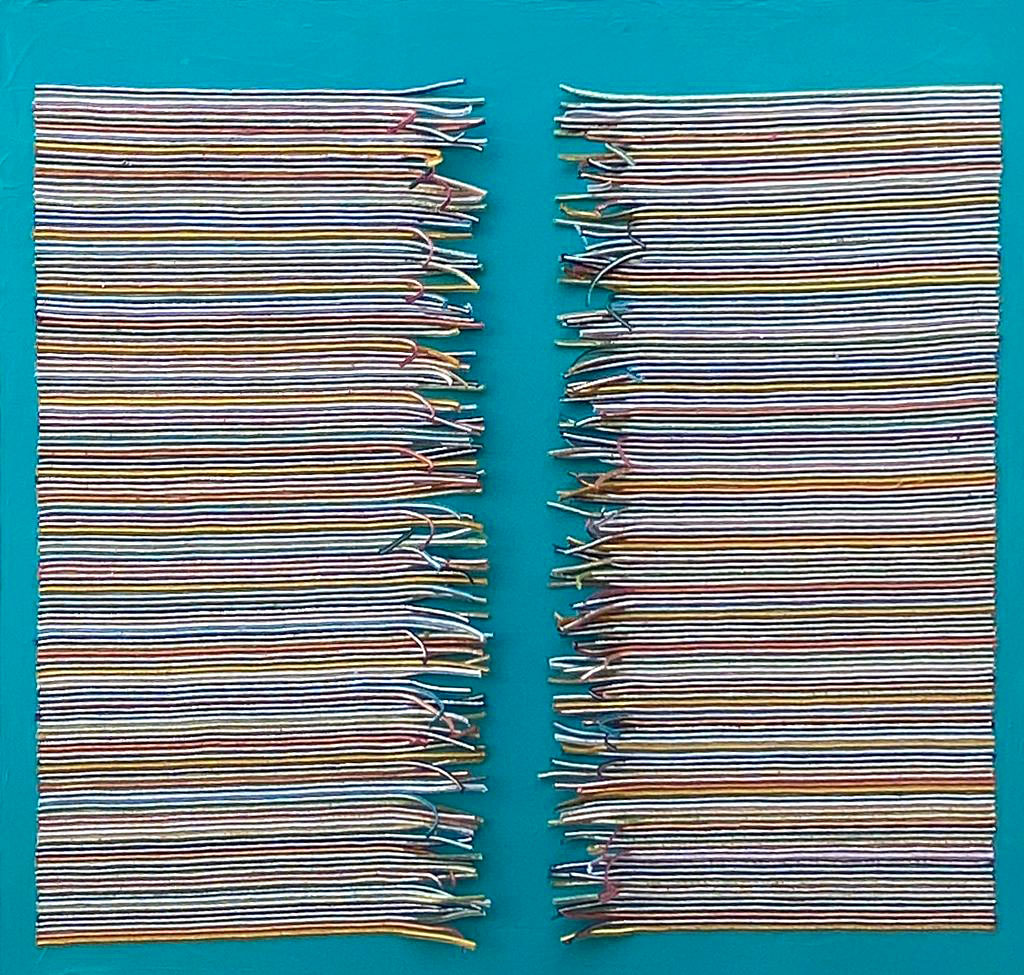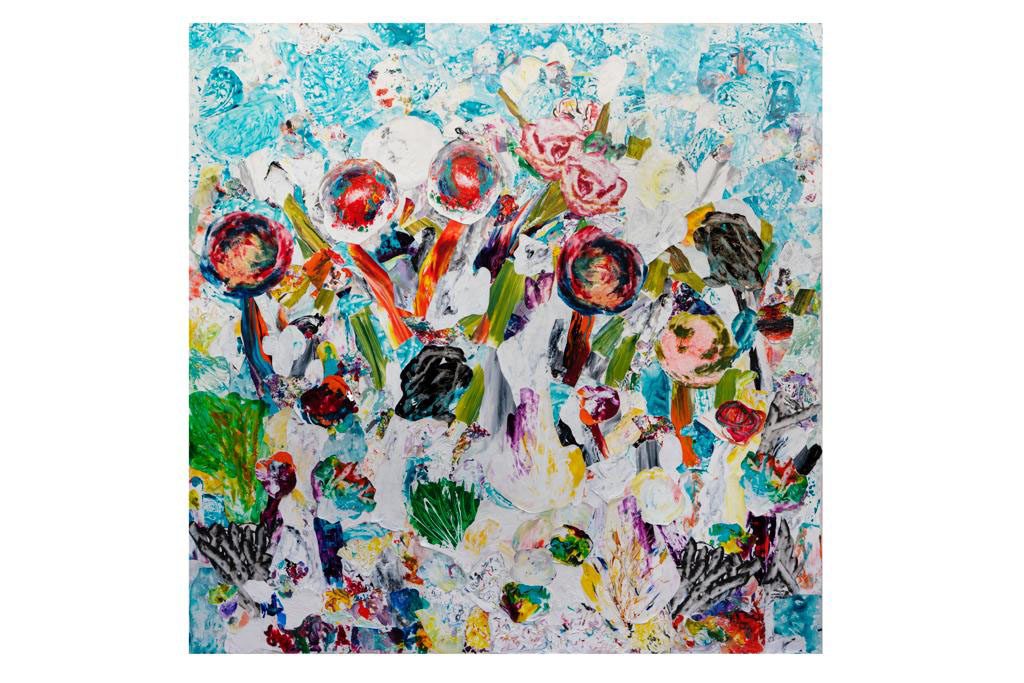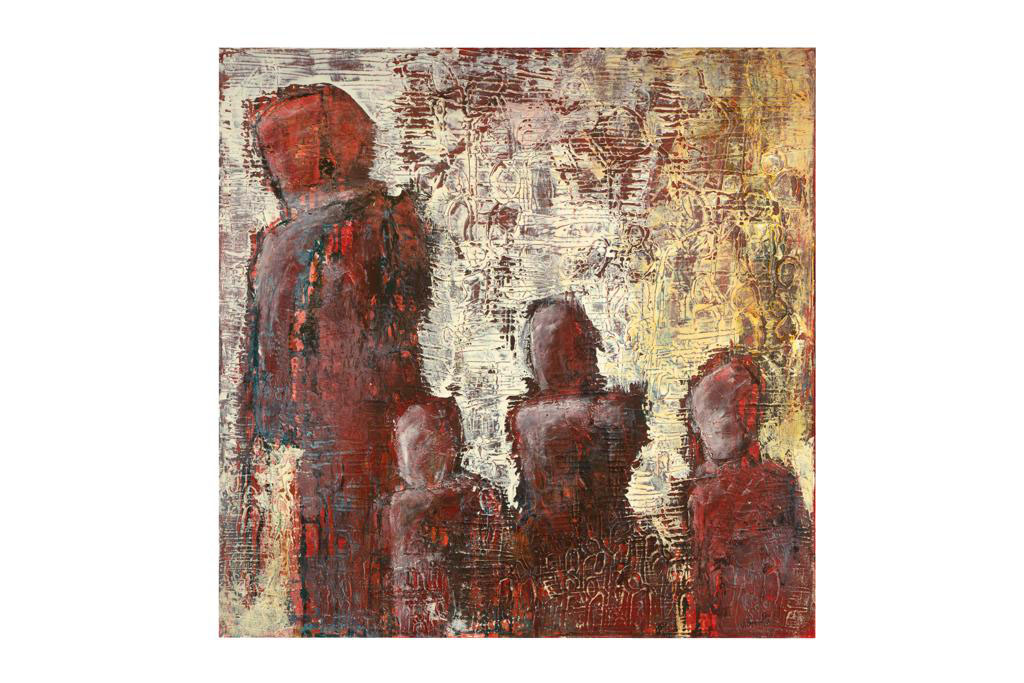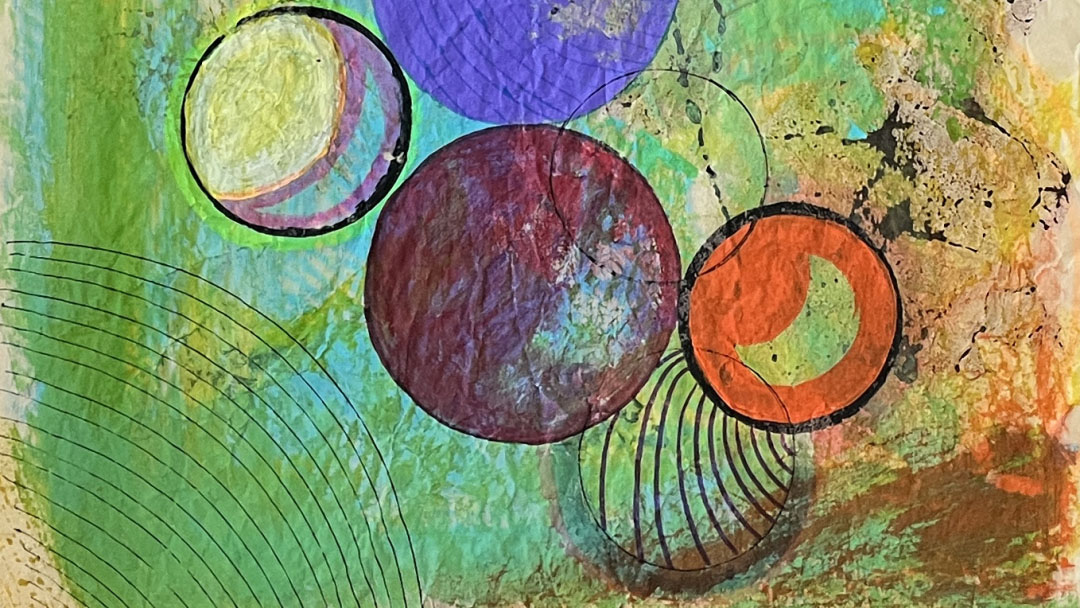
Noura Ali-Ramahi’s “Allow Me Not to Explain” opens Nov. 10 and runs through Nov. 23, 2022 at the NYU Abu Dhabi Project Space in the Arts Center, NYUAD Campus, Saadiyat Island, Abu Dhabi, U.A.E.
Rana Asfour
The new exhibition “Allow Me Not to Explain,” from Lebanese-born Emirati artist Noura Ali-Ramahi, spotlights “everything, anything and nothing” according to the artist. The work is on view at NYU Abu Dhabi’s Project Space from Nov. 10-23, and features a kaleidoscope of vibrant artwork based on the artist’s practice of repetitive meditation. The show also seeks to shed light on the need to address the world’s escalating environmental crisis — convenient given that the COP28 climate conference is slotted to take place here in Abu Dhabi next year.
“My new work is a perfect example of how materials I find inspire my creativity,” Ali-Ramahi explains. “Every piece of art on exhibit is made out of everyday material. It was my way to throw away as little as possible. I hate waste and shudder at the thought of the world’s landfills. I’m a certified diver and it appalls me to see how much of our oceans are filling up with rubbish and plastic. This is my way of turning paper waste that comes into my home into something beautiful…If one thing comes out of this exhibition, it is for audiences to be inspired to re-use paper in more creative ways.”
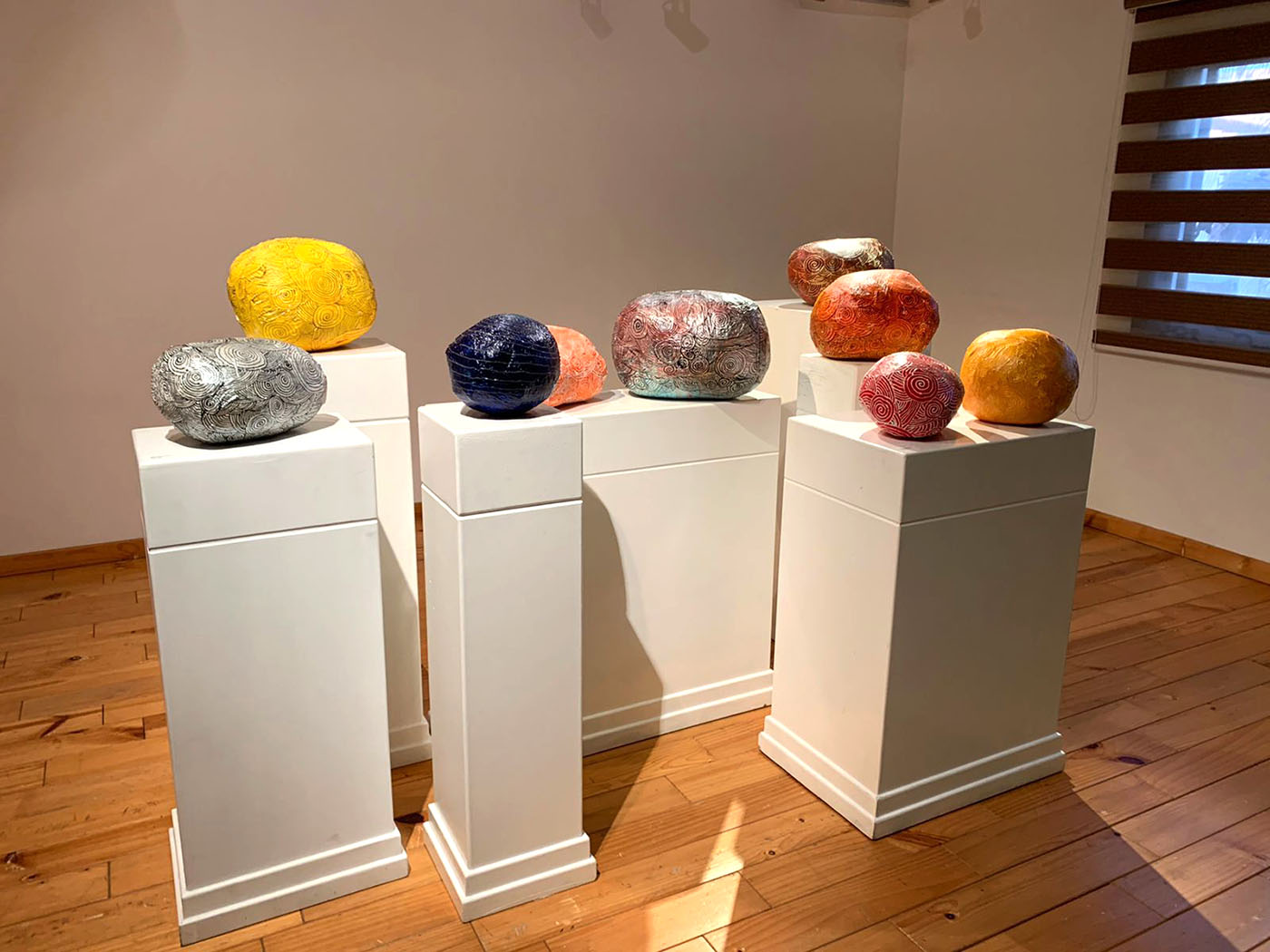
“Allow Me Not to Explain” is a continuation of a series of works the artist labelled as “Nostalgia,” “Pandemic” and finally, “Losing my Mind,” which took place at the Etihad Modern Art Gallery at the end of 2021 and into 2022.
“‘Nostalgia’ was a very particular body of work that I did which was a collage made with plastic and paper, that reflected garden scenes, water and flowers. ‘Pandemic’ is the body of work I did during the pandemic lockdowns in which I used a lot of Emirati Talli thread that included a lot of repetition in the work. ‘Losing my Mind’ was the last thing I worked on before moving on to this exhibition, which was work that I found very hard to explain. I named it ‘Losing my Mind’ in a nod to Van Gogh, who once said that he painted in order to stop thinking. This resonated with me because losing my mind wasn’t about going crazy during the pandemic, it was about stopping myself from judging my work and giving myself permission to wander with my thoughts, to free myself from my inhibitions and the struggle to explain what it was that I was producing.”
The artworks are abstract pieces, many of which are comprised of a multitude of colorful repetitive, uniform and interlaced circles, drawn using a combination of different mediums — paint, ink pens, and at one point, Tipp-Ex. The designs appear on parchment/wax paper that came with a cheese order, a piece of cardboard that wrapped a delivery package, or even a paper bag from a retail brand.
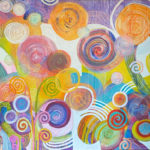
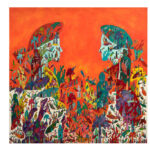
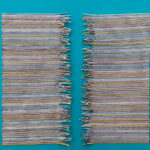
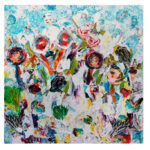
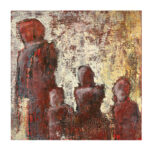
As the artist shows one work after another, there is palpable joy not only in the works themselves but also in the entire mood of the viewing experience, in which there is a sense of lightness and exuberance. The meditative, repetitive process renders the pieces deceivingly playful, almost betraying the serious message that lies behind their conception. I can understand how some viewers, not used to assigning their own meaning to what they see before them, might struggle with the pieces. At one point, I found myself prodding Noura Ali-Ramahi to reveal whether the circles were meant to be a constellation of stars in one, a setting sun sinking into a tilted horizon in the next, and even a dolphin in yet another. What was the four-meter scroll that took months to make trying to tell us? In short, what was the narrative? Where was the wall text for each one?
“I would be deceiving you if I told you there was one. That’s the point of this particular work and that’s why there is no wall text. For the past two years, my work has refused to fit into one concise narrative. What links these pieces together is that they portray the nature that I encounter on my walks, an act of repetitive movement in and of itself, be it the sunrise, the sunset, the shape of the sun, the earth, or the sea.”
“I am not on a mission to discredit narrative art, because I’ve told stories through previous work such as when I painted my series on refugees. The story there was clear to tell and to explain. Again, in ‘Rhapsody,’ my second exhibition, there was a sort of story on why I was compelled to draw my abstract humans and fish. However, if I can’t find an explanation for my work, I refuse to impose one out of nothing. I prefer the art to remain pure, free of any labelling. What I truly want is for viewers to experience the works of this exhibition in a way that will spark their imagination and curiosity, and prod them to reach their own interpretation of what the work means to them. The materials I use send out a message about the environment, but it is up to the viewer to make their own conclusion about what they see in the work itself, which I hope will be a fun and joyful exercise.”
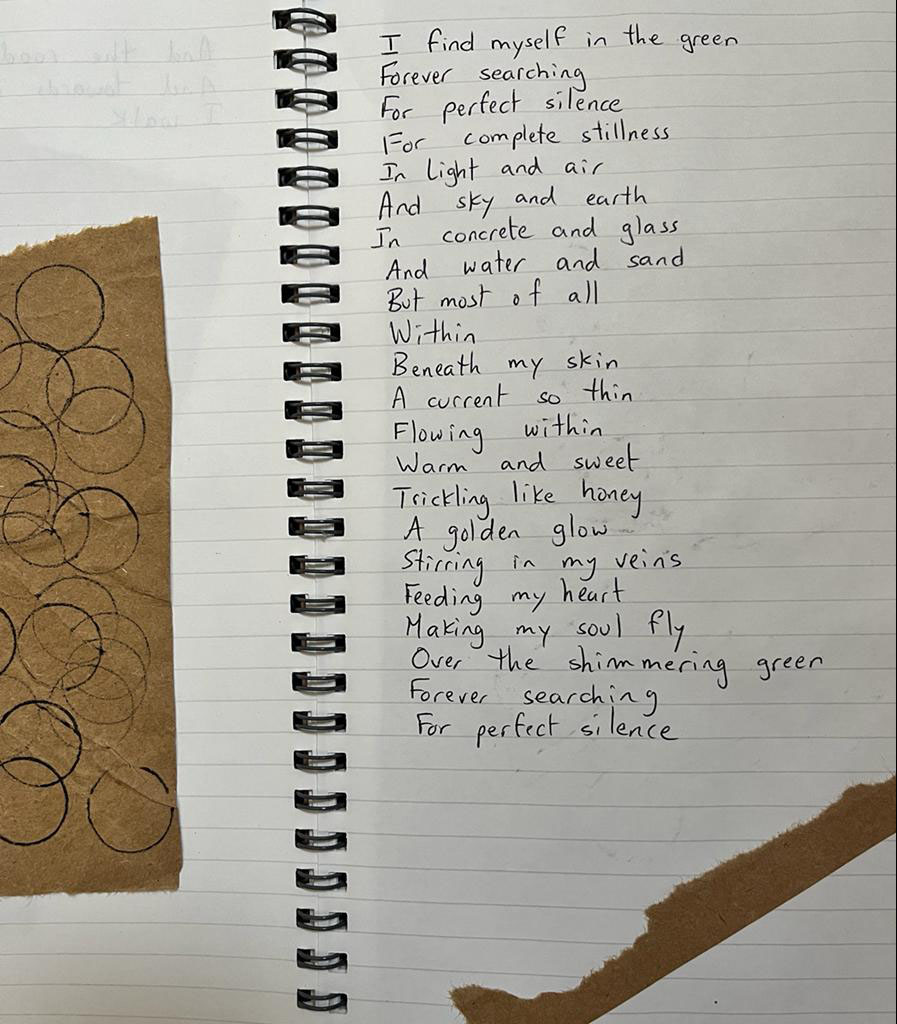
Having dabbled in pencil and charcoal drawing as well as silk painting during her high school years in Dubai, in the early1990s, and then with clay painting at university in Beirut, it wasn’t until 2016 that Ali-Ramahi decided to exhibit her work for the first time. A business graduate, she has had no formal art training, and initially approached the subject as a hobby, making her own kids’ give-away gifts at their birthday parties.
“May 2015 is when things changed for me. I attended a collective exhibition for some artist friends at Abu Dhabi’s TwoFour54, where I was inspired to book the place for my own work. I set the date for January of the following year. Looking back on that show now, I see that it proved to be a kind of affirmation, to myself, that art was something I wanted to pursue seriously.”
Faced with the eight-month deadline, she called on her family for help. Her father and sister are both poets, while her mother and uncle paint. As a person who writes poetry, Ali-Ramahi has realized how much music, particularly jazz, has, on many occasions, performed in juxtaposition with her artwork and is “as important as breathing.” In “Rhapsody,” her second exhibition in 2018, she would name each piece after a song — one titled “Love is a Losing Game by Amy Winehouse” sold instantly. And now, “Allow Me Not to Explain” will include a handwritten scrapbook of her own, never-before shared poems, inspired by her interaction with nature on those early morning walks, that visitors can read through. There are, so far, no plans to print out any other copies.
“I decided that my first exhibition was going to include my mother, my uncle, and my sister. I had been working on my ‘Displaced’ series about refugees. My sister Sarah’s self-published book of poems, The Flower Girl (Atelier Poetica, 2009), provided an essential source of inspiration to the work. Finally, ‘A Picture in a Thousand Words’ was birthed in 2016, thanks to the collaborative interpretation of Sarah’s words that I expressed through my paintings.”
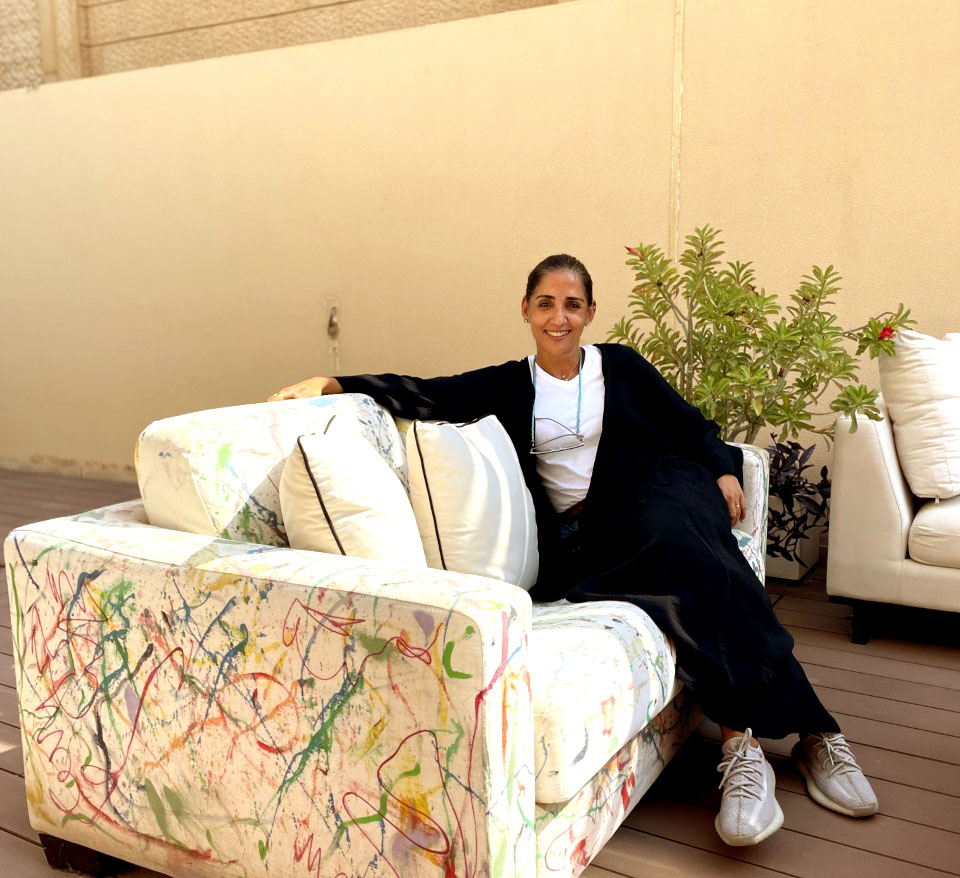
Ali-Ramahi is both an artist and a collector. Her gallery-like house is dotted with works of artists the likes of Jason Seif, Sahmarani, Afra Al Dhaheri, Hashel Al Lamki, and Will Martyr. She is of a generation of Lebanese Arabs who moved with her family to the UAE in 1989, in pursuit of temporary shelter from Lebanon’s Civil War. Decades later, it has become the place her family calls home. Following in the footsteps of her father, Ali-Ramahi has written poetry from very early on, and used it to channel her thoughts on war, displacement, travel and most recently what she sees, feels and hears on her daily walks, at sunrise, which she documents on her Instagram feed under the title “A Billion Steps Towards the Sun” — the title of a book she is thinking of writing, and where, incidentally, she also manages to sell her art pieces to followers in places like Portugal and the UK.
“Since I started taking long daily walks, I’ve found that I’ve been writing more. My poetry is always spur of the moment. I don’t sit down to plan a poem, instead a word may come to me, or the first line of a poem pops in my head and I’m off. My art and my poetry start with the same urge that needs to be translated either into words of poetry, or into an artwork. That’s not to say that one informs the other, but only that they are two forms of expression that I channel my thoughts and feelings through with no specific end result.
“I just finished reading Quiet by Susan Cain, in which she talks about flow, and it struck me how what she describes is exactly what I do with regard to my approach to my work. I find that when I walk, I flow, when I write I flow. Even the repetitive circles in my new exhibition are all about flow where the result, my work sounding or looking polished, is not the main focus, but the actual process itself whereby I myself am surprised with the result is what thrills and excites me.”
The mother of four feels she’s come quite far since that first exhibition, admitting that it has been a long and winding road to self-realization and acquiring confidence in the work she produces, without much consideration for how audiences may judge her work. Instead, Ali-Ramahi has adopted an “I do this is and it is what I’m showing you” attitude. That said, however, she is an Arab woman living in the UAE and is married to an Emirati; she admits that despite the confidence she has built up through the success of her art pieces, things remain far from ideal.
“There is definitely self-censorship. There are things that I think about doing but I worry may not be culturally accepted. They would be too controversial. Sometimes there are things I want to incorporate into my paintings, either a word or an image, which I find I’m not at a level of courage to go ahead and apply. I realize though that some artists in the UAE have begun to take that step and are successful at what they do, but I feel I’m not quite ready to take that leap, mainly because my ideas are not yet fully developed, irrespective of cultural sensitivity.”
There is an ease of manner and a refreshing rebelliousness to Ali-Ramahi, who is no longer apologetic about experimenting with a multitude of media and styles. She is someone with one target in mind and that is to give full reign to her creativity, trusting in its ability to take her to where she’s meant to be…from working on largescale collages made of palette paper and plastic bags, to throwing paint at furniture, canvas and, frankly, anything else she feels like.
“Right now, art in the Gulf, and the UAE in particular, is booming. There is a hunger to show the art of the region and artists today are enjoying an unprecedented abundance of platforms to exhibit their work within the Arab world, whereas before we only viewed art as that coming in from the West. The art world is huge and it requires a lot of patience, hard work and networking. Artists in this region tend to support each other’s work by showing up at exhibitions, and by supporting collaborations with each other. That said, it’s not easy to break in to, and a lot of persistence is required, but it isn’t impossible either.
“When it comes to what my work, I don’t want to confine myself to one style. I am not alone in this. I can think of Emirati Afra Al Dhaheri and Hashel Al Lamki as two examples of artists who continually try out different mediums and styles and do so successfully. Who decides what’s wrong and what’s right? I refuse to stop myself from trying out new things. My work is all about experimentation and unexpectedness, and I’m happy to do both for the rest of my life.”




